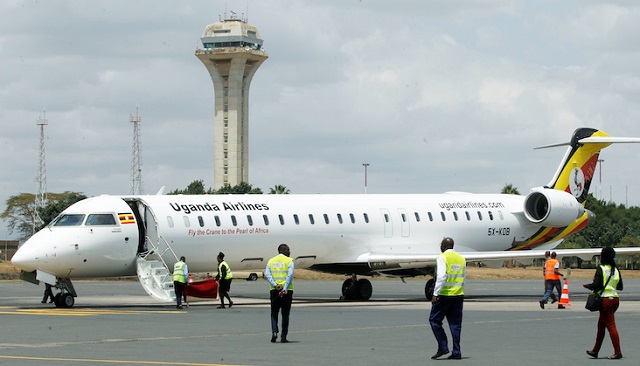
The impact at stake in route development efforts makes the role of government leadership critical, experts say
Kampala, Uganda | THE INDEPENDENT | The rapid recovery of air travel after Covid-19 underlines a lasting feature of a globally connected world: the urge of ever-growing numbers of people to explore the planet in search of new adventures and opportunities. In the decade to 2018, the number of flights booked and flown nearly doubled to 4bn; by 2030, we could see it double again.
Yet the growth in air travel, and its economic benefits, are not evenly spread. Major African hubs such as Johannesburg and Addis Ababa typically attract a larger share of arrivals, tourism growth, business activity and investment. Smaller countries and secondary cities must, meanwhile, rely on connecting flights and trickle-down benefits. This matters, since the competitiveness of a city, region or country depends greatly on its level of connectivity with its key markets.
The massive global travel market represents an opportunity for regions and nations to add significant incremental growth to their economies quickly and inexpensively. In a time of economic turbulence, and recession or stagnation in many parts of the world, air-route development is one of the most efficient levers to ignite economic growth.
The opportunity is made all the greater by new aircraft technology that enables longer routes with smaller-gauge aircraft, making direct routes to smaller destinations feasible and profitable.
Don’t leave route development to your airport alone
The impact at stake in route development efforts makes the role of government leadership critical. Government leaders are the custodians of their countries’ and regions’ economic growth strategies, and their global brands – which must be the foundation of any effort to attract direct flights. Government leaders’ convening power is also crucial: they can bring together coalitions of business and public-sector agencies to shape a powerful, joined-up campaign for route development.
Airports play a core role – not least by providing the infrastructure and user experience to support a large-scale increase in international arrivals. But we are convinced that leaving route development to airports alone is a mistake. Not only do airports lack the broader context of country and region growth visions; they also have a narrower set of incentives. Their revenue models are based on maximising passenger numbers, regardless of those passengers’ purpose of visit, length of stay or contribution to the local economy.
Government-led initiatives, by contrast, can target the markets with greatest potential to bring high-value tourism and business travel, as well as the routes that are best placed to stimulate new demand from those markets, served by the ideal carrier for each specific route.
Take Cape Town, for example: before 2019, every American visiting the city travelled via a connecting hub in a route taking 20 hours or even more. In 2016, Western Cape premier Alan Winde launched an Air Access initiative – supported by local business leaders and the airport – to land direct flights from 13 global airlines in just three years. Today, Americans are all over the city’s beaches, vineyards and co-working hubs.
In 2006 Carlos Ricardo Benavides, at the time Costa Rica’s tourism minister, launched a structured, collaborative effort to attract 60+ direct flights from US and European cities, positioning the country as one of the most successful tourist markets globally.
In a turbulent world, safeguard your economy
Government leaders driving route development campaigns are enthused by powerful visions of economic transformation for their countries and regions. But they are just as alive to the risks of falling behind in the competitive global air-travel market, which is buffeted by macro-economic turbulence, political volatility, and mounting environmental concerns.
Smaller countries and regions face a range of other challenges. An obvious one is the recurrence of pandemics such as Covid-19, SARS or Ebola. The Covid-19 experience is a reminder of the very high dependence of air transport on political decisions: in countries where political leadership drives air-service development efforts, effective measures were taken to allow for a faster recovery once the worst of the pandemic had passed.
Another challenge is a mismatch between airlines’ requirements and expectations and the quality of the destination region’s infrastructure and services.
Climate change and decarbonisation pose further challenges to air travel, and to countries and regions that depend on international arrivals for employment and economic prosperity. Governments, and the collaborative efforts they lead, will need a close understanding of how climate change and decarbonisation will change the financial equation of some flights, and may need to consider adopting short-term solutions until more comprehensive emissions-reduction solutions become available.
Government-led, collaborative route development remains, however, the exception. At a recent global air-route conference, we scanned the 150 countries and cities present – and found that 90% of them were represented only by their airports. That means many government leaders are missing out on an important opportunity for growth.
And in a global travel market that is being reshaped by macroeconomic turbulence, environmental concerns and fierce competition between destinations, government-led route development efforts are not only unlocking benefits – they are also protecting their economies for the future.
What it takes to get this right
We believe government leaders must be present in every successful route development effort – building broad collaboration to ensure route development is at the centre of national or regional strategies to improve economic competitiveness and boost growth. This leadership starts with a bold vision of what the country or region can become, and sees route development as a means to realise that vision.
Government leaders also need to assemble and orchestrate a broad, collaborative coalition of partners for route development – including tourism authorities, investment-promotion institutions, airports, private-sector associations and firms, and government agencies at local, regional and national levels.
The government-led route development efforts require the crafting of a powerful story for airline executives, one that convinces them there will be robust, sustained demand for global routes to their destination, both in the immediate term and well into the future.
Government-led efforts should also harness the power of data and analytics – both to target a country’s key markets and demographics for their own marketing campaigns, and to support airlines in forecasting demand.
Bold, collaborative initiatives to attract new routes are the surest way to put a country, region or city on the map for global tourism, business and investment. The international aviation market is fiercely competitive and fraught with volatility: only the smartest and most strategic route development efforts will achieve sustained success. It’s time for ministers, governors, mayors and other senior government leaders to climb into the cockpit and chart a course of air-route driven economic success.
*****
Source: African.business
 The Independent Uganda: You get the Truth we Pay the Price
The Independent Uganda: You get the Truth we Pay the Price





